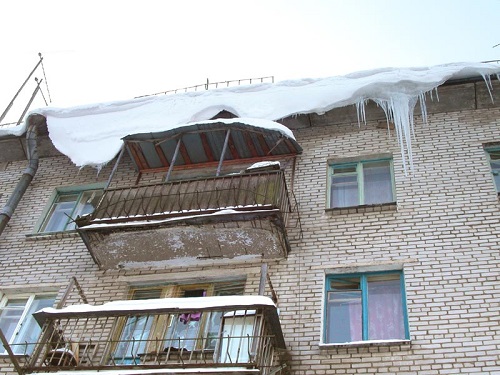
The first snow, lying evenly on the roof surface, begins to thaw slightly over time and forms a thin ice film. It melts from the heat that radiates from the roof surface, and freezes under the influence of freezing temperatures. The layers of snow accumulating on it, dense and thick, can rapidly fall down at any moment. But if you installed snow retainers on the roof, you can avoid many of the troubles that are associated with such a fall:
- avoid damage to gutters and roof elements;
- You will not worry about causing harm to the health and life of people passing by;
- your roof does not deform and does not bend under a huge mass of snow, in addition, water smudges will not appear on the ceiling;
- no damage will be caused to decorative elements and plantings growing near the building;
- an avalanche will not fall on cars parked nearby;
- the lower tier of the roof and individual elements of the roofing will not be damaged;
- due to the streams of water that flow along the walls during a sharp warming, the outer plaster will not fall off;

You may have heard the expression “snow load on the roof”. It says that the snow layer is not as light as it seems to us. If one meter of snow will press on one centimeter of the surface, then the force of its impact on the roof can be compared with the force with which a nail is hammered. You can imagine the load that the roof can withstand after heavy snowfalls! It is not surprising that under such a weight, even the highest quality roofing can become worthless.
The installation of snow retainers on the roof makes it possible to avoid all these troubles and to prevent the fall of snow mass, which usually occurs unexpectedly and uncontrollably. This simple equipment is also called snow plow. They are available in various modifications and can be either universal, designed for any type of roof, or adapted only for a certain type of roof. Snow retention can be
- tubular and corner;
- trellised and lamellar;
- point, in the form of hooks (snow stoppers).
What kind of snow blower you need will depend on the type of roof and roofing, as well as on the climatic region.

When mounting a snow retainer, be sure to use safety devices. For safe work on dropping snow from the roof, ladders are installed on its roof. When the height of the building exceeds 6 meters, it would be reasonable to arrange protection along the perimeter of the roof in the form of a reinforcement fence.
Content
Tubular and trellised snow retention
Tubular and lattice roof snow holders are universal and can be successfully used on roofs made from roll and sheet materials, as well as made from natural tiles. They are considered the most reliable and are used even where the slope of the roof is quite large.

When the roof structure has an inclination angle of 60 degrees or more, the snow load is not taken into account. Why? It is believed that the snow cover on such a roof does not last long. Installation of snow retainers in this case is simply impractical.
Slopes with a slight standard slope are the most dangerous.
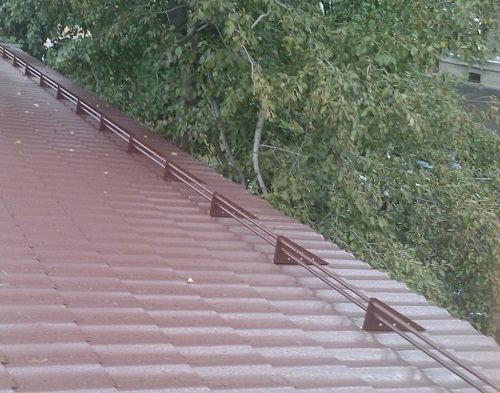
There are several reasons, namely:
- they have a fairly large area on the surface of which there is a significant accumulation of snow;
- a roof tilt angle of 20-35 degrees contributes to the largest accumulation of snow and the simultaneous convergence of the entire snow mass at once;
- snow retention on such a roof is subjected to significant static load, and when moving snow - and dynamic.
Thanks to the tubular and trellised snow scoops, it is possible to hold a thick snow carpet, which has considerable weight. The great advantage of these designs is that they can be installed not only during the installation of a new roof. Since the brackets of the snow retainers are attached to the crate through the roofing material, they can be used to hold snow on the roof, which is already in operation.
The brackets can be very different in length - from 30 cm to 1.5 meters. It all depends on the design of the roof. Tubular snow blowers are lengthened by means of pipe joints, and trellised ones are added by adding additional sections of a certain length.
Snow Retainers - Snow Hooks
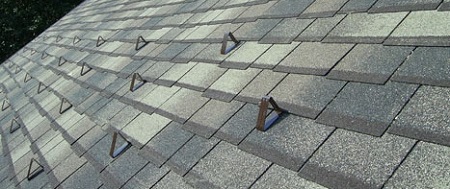
Such snow retainers, such as hooks, have found their application on roofs coated with ruberoid or Euro tiles. They can only be installed during installation or overhaul of the roof covering. They are used when the angle of the roof is less than 30 degrees.
The hooks are mounted in several rows (maybe one) in a checkerboard pattern over the entire surface of the roof. This is done as the roofing material is laid by attaching to the crate. The fulcrum should be at least 2 places of the supporting structure.

In the case where there is a restriction in material means, snow retention can be installed in the most dangerous places. This may include pedestrian paths, places of entry to the building and car parking, the most valuable landscaping areas, etc.
Snow holders in the form of plates and corners
Lamellar snow retention and their variety - angular, are used on a roofing made of a material such as tin. We are talking about galvanized iron, metal and corrugated board. The great advantage of these elements is that they are made of the same materials as the main roof covering. The question of how to install snow retainers on the roof, which is already functioning, is solved very simply. After all, they can be mounted on an existing roof.
Among the shortcomings of these types of snow removers, their low strength can be noted. Due to the inability to hold a large layer of snow, they are not used when the roof slope is less than 30 degrees.

Even if devices to hold snow are installed on your roof, you still need to periodically remove it from there. If you do not do regular cleaning, then the mass of snow cover will constantly increase. In turn, pressure on the roof and snow retention will increase and may lead to damage.
Retention of snow on a soft roof
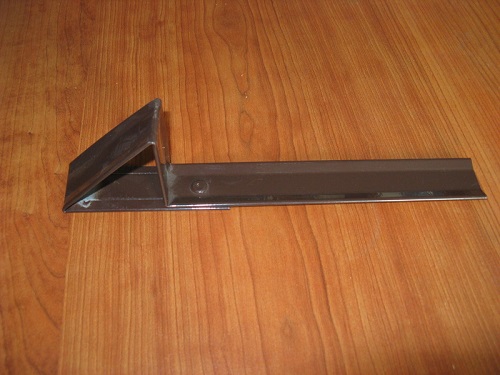
The design features of a soft roof and the equipment with its snow retainers differs from how this process is carried out on a roofing made of metal materials.
Firstly, according to construction standards, the slope angle, which is allowed when installing a soft roof, should not be higher than 15 degrees. Such a roof is rather flat and the danger of avalanche convergence of snow on it is very small. This allows you to use for snow retention is not very powerful types of snow removers.
Secondly, a feature of a soft roof covering is its rough surface. The crumb stone, which is the top layer of the roofing material, minimizes the risk of uncontrolled and free sliding of snow layers from the roof surface.
Thirdly, snow retainers for soft roofs do not require major changes to the design of the lathing, as is necessary when working with a metal roof. Indeed, under the soft coating of the roof, a solid base is made, which is the place of fastening of the snow blowers.
Install snow retention on a soft roof
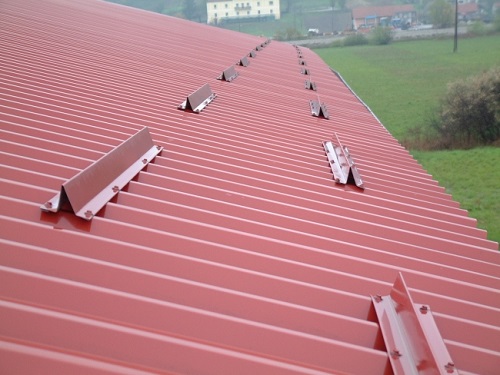
Basically, snow retainers are installed in the process of roofing. In the case when this is not done, they can be mounted already on the existing coverage.
Their installation begins from the edge of the cornice, indenting from the edge of the roof at a distance of 30-50 centimeters. The placement of snow retainers takes place depending on their type. Tubular views are placed in one line, and the placement of corner and point elements is staggered.
In those climatic zones where snow falls in large quantities, and the slopes of the roofs are large and long, snow retainers are installed in two rows, making a gap of 5 or 5.5 meters between them.
When tubular models are installed, they are usually purchased with a set of mounts. Such a snow blower is attached to the crate through a layer of roofing with screws.

Installation of tubular snow arresters is carried out along the line of placement of load-bearing walls. This arrangement allows you to balance the load on the roof.
Neighbor mounts should be 60-110 centimeters apart. The holes that form when the screws are screwed in are sealed with the rubber seals included in the kit.
Snow retention for soft roofs can be in the form of snow stoppers or spot snow retention. They are not a very wide steel strip, bent at the end in the form of a triangle. The material for them is galvanized steel or other metal, on the surface of which powder paint is applied.
When the installation is carried out during the installation of the roof, the snow stoppers are screwed to the base of the roof. The junction is covered with the following sheet of roofing material.
In the case when the snow retainers are mounted on an existing soft roof, rubber seals are used. Such measures exclude the possibility of seepage of water at the attachment points.

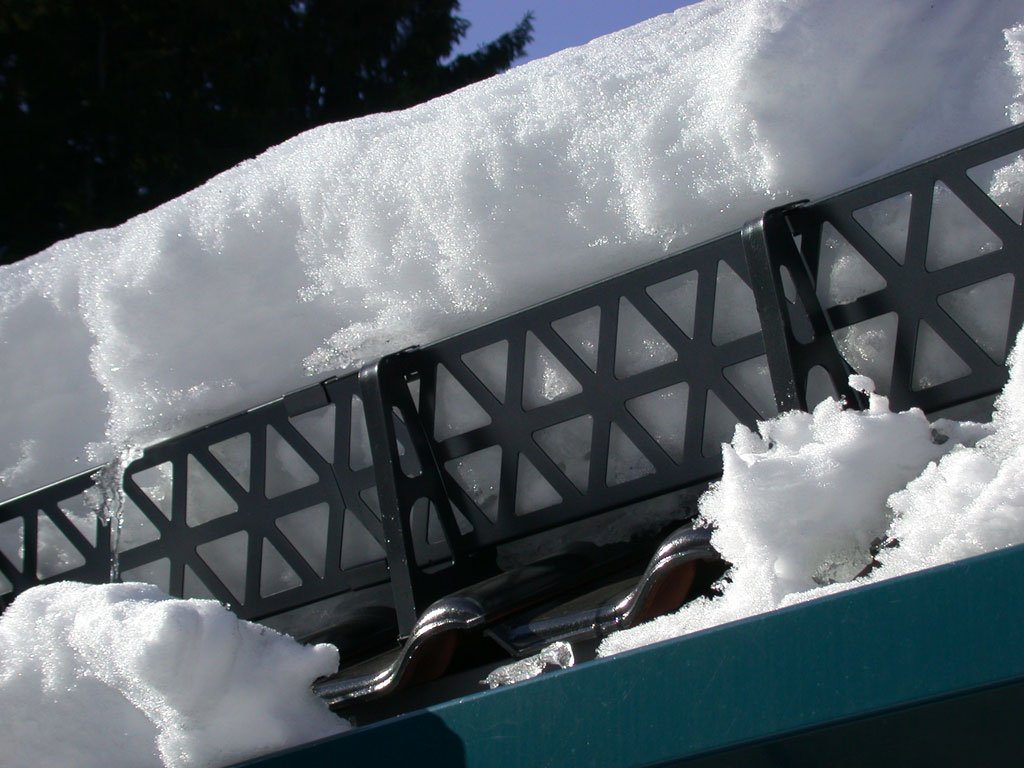



Alas, no comments yet. Be the first!